My recent trip to Hong Kong for an authentic wonton soup recipe was fruitful. I have the advantage of having my siblings stay in Hong Kong and savoring some of the best wontons in town. They also brought me to places only known to the locals to hunt for the exotic ingredients the top wonton chefs used.
Wonton has undoubtedly evolved from a street food snack into a culinary masterpiece. Nowadays, thousands of tourists visiting Hong Kong flock to the famed wonton stores, hunting for top-rated wontons and soup.
Although noodles are not the staple food, wonton noodles have a unique emotional attachment to Cantonese. Having a bowl of authentic wonton noodles back after an extended period away from home is satisfying.
1. A brief history of wonton
Wonton is the transcription of the word, 雲吞 Pronounced in Cantonese. These two Chinese characters are the corrupt form of a more complex character 餛飩.
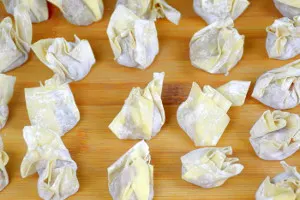
The history of wonton can be traced back to the era of Western Han (206 BC – 9 AD). You can find the phrase Wonton 餛飩 in Fangyan 《方言》, the first Chinese dictionary of dialectal terms, which was edited by the scholar Yang Xion 揚雄 in that era.
Although wonton originated in Northern China, the people in Guangzhou fine-tuned the wonton recipe. The style and ingredients they used are similar to those in Hong Kong. As a result, Cantonese wonton has become popular in many parts of the world.
Wonton is a simple Chinese classic dumpling delight, served originally with noodles in soup but also as fried wonton. Its mysteriously delicious Far East flavor reminds you of the old Shanghai and the post-World War 2 era in the bustling alleys of Hong Kong.
Note: This post may contain affiliate links. Please read my privacy policy for more info. I may receive commissions for purchases made through links in this post. As an Amazon Associate, I earn from qualifying purchases.
2. Searching for the unique ingredients to make the classic wonton soup
Dried flounder is the best-kept secret of the authentic wonton. It is hard to get into countries other than China as these are exotic ingredients uncommon in different cuisines. However, I got it in powder form and the dry pieces at a specialized shop at Ap Lei Chau, a small island next to the Aberdeen harbor of Hong Kong. Ap Lei Chau is a fishing island. Many stores sell seafood like dried scallops, abalones, squid, and flounder.
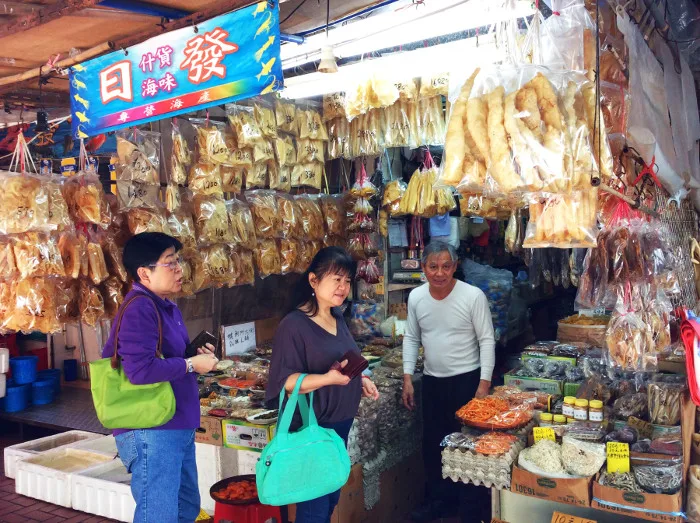
3. The best wonton restaurants in Hong Kong
Guangdong is the birthplace of Cantonese wonton noodles. After World War Two, the techniques of making wontons and noodles were passed down to Cantonese migrants in Hong Kong. Since then, Hong Kong has produced the best wonton noodles in the world.
Here are my top three choices of the wonton noodle shop in Hong Kong. You should make a trip to visit these restaurants if you are there. They have been the gold standard for anyone to make a comparison of the quality of wonton, which I am trying to replicate the taste in the following wonton recipe.
a. Mak’s Noodle 麥奀記- The family who popularized wonton in Hong Kong
Located in Central Hong Kong, this is the first noodle family business traced back to Mark’s first noodle house 池記 in Guangzhou in the 1930s. During World War Two, Mak’s family migrated to Hong Kong, establishing a wonton shop in Central.
The flavor is the culmination of combining the taste of pork, shrimp, and fish. It is a clear broth like consommé but with much depth of flavor. The springy noodles and tasty wontons had gained the recognition of the high-ranking officials and social elites. They were called the King of Guangzhou Wonton noodles at that time.
Mak’s noodle is now operated by the third generation of the Mak family and makes wontons and soups according to the well-guarded family wonton soup recipe. Mak’s Noodle is considered the most established wonton restaurant in Hong Kong.
b. Ho Hung Kee 何洪記 – The one-star Michelin wonton restaurant
Armed with the Michelin star, Ho Hung Kee was found seventy years ago by Mr. Ho, the disciple of the Mak family. This restaurant is the first wonton noodle house to be awarded a Michelin star in 2012 and 2013.
Ho Kung Kee’s traditional wonton earned numerous accolades. The soup has a unique ingredient- dried flounder fish, which renders an exceptional flavor. I get some dried flounder fish (and one in powder form), which will be part of the ingredients of my recipe.
Ho Hung Kee has a branch at Terminal 1 of the Hong Kong International Airport. Its special Hong Kong shrimp wonton recipe is legendary, and don’t forget to drop by when you visit Hong Kong.
c. Wing Wah Noodle Shop 永華面家- The only outlet
Wing Wah noodle shop has been the favorable wonton shop for my mother for many years.
Located in Wanchai, Hong Kong, the noodle soup is prepared with an open secret- shark bone. Gastronomes who patronize this shop will immediately recognize the difference in the flavor.
Wing Wah serves wonton noodles prepared with the traditional method. The dough is made by kneading and pressing with a giant bamboo.
You can observe how to prepare the noodles in the open kitchen at the entrance. Wing Wah Noodle Shop has no other outlet. Being only one shop means they can strictly maintain the quality of the wontons and noodles.
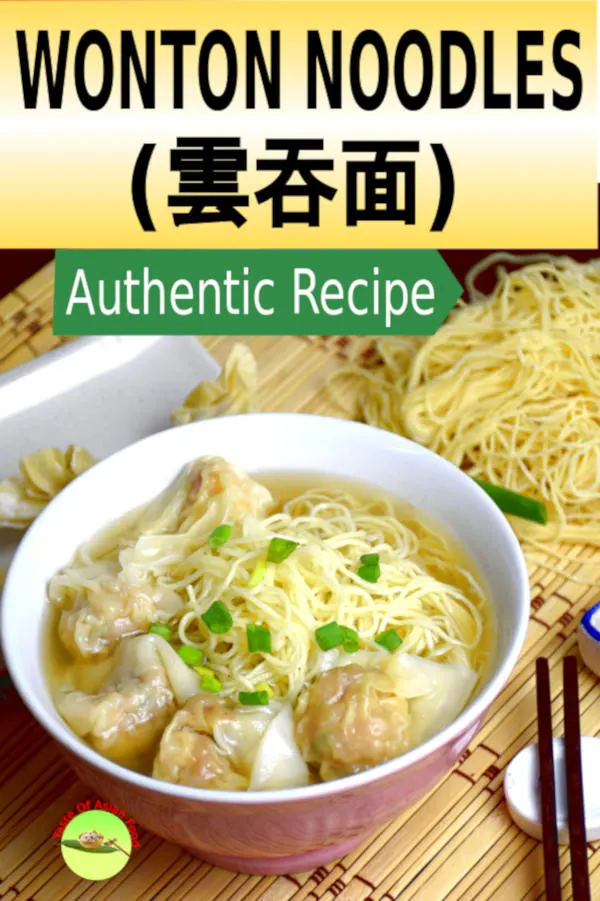
4. Wonton and authentic wonton soup recipe- the best proximity to the Michelin star standard
Armed with an arsenal of exotic ingredients, I am ready to take on the challenge of developing an authentic wonton soup recipe to be on par or at least closest to the Michelin star masterpiece I have tried. I intend to test a few recipe variations, which I hope taste great without these exotic ingredients. The best wontons should be enjoyed by everyone, anywhere, without using the hard-to-find items.
a. How to make wonton
Nowadays, many factories produce frozen wontons, but the quality never comes close to freshly made ones. Making wonton is easy. You only need ground pork, shrimp, white pepper, eggs, and salt. If you are serious about the quality, add the flounder powder, dry shrimp powder, and spring onion (green onions).
Here is my wonton recipe after rounds of testing, and it is very close to the wontons available at Ho Hung Kee.
The filling of wonton can be either pork, shrimp, or both. I prefer my ‘golden formula’ with 40% lean pork, 10% pork fat, and 50% fresh shrimp. The wonton filling with a small portion of pork fat has a softer texture. You can substitute pork with ground chicken to make the chicken wontons.
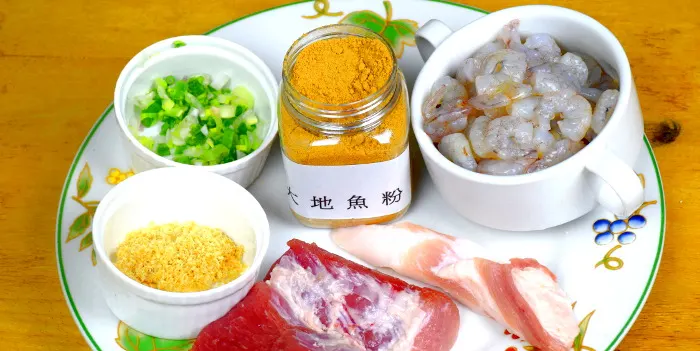
b. Tips to make wontons with great flavor
Please read the following note before attempting to prepare your homemade wontons. Your work becomes simpler and better with a clear understanding of how to do it correctly.
- Soaking the shrimp with salt and baking soda and washing them with running water to make the shrimp crunchy. The crunchiness of the shrimp is crucial for good wontons.
- Mince the pork, but keep the shrimp as a whole piece. ( If you use large shrimps, cut them into 2 or 3 parts). Unless you make an enormous batch of wontons, the texture is much better if you mince the pork by hand. Then, of course, you can blend it in a food processor. However, when you bite, it will turn out like a paste, and the wonton will lack the springy filling.
- The shrimp will lose its crunchiness if it is chopped or minced. However, the pinkish shrimp pieces can be seen right under the translucent wonton skin after cooking, which is aesthetically appealing.
- Since the shrimp are marinated with excess salt (for crunchiness), be careful not to add too much salt to the pork.
- Some chefs prefer to use whole shrimp to make shrimp wonton. It is similar to another Cantonese delicacy Har Gow (shrimp dumpling). Most established wonton shops prefer to use whole shrimp and are sometimes accented by shiitake mushrooms; perhaps it looks expensive and can fetch a higher price.
- Yellow chives may not be readily available outside Asia. You can use spring onions as the substitution.
- Refrigerate the filling so it is easier to handle while wrapping the wonton.
- Place the filling on the wonton skin. Fold diagonally to sea the opposite corner and lightly press the filling. The wonton skin will adhere to the wet filling. There is no need to use egg liquid to seal the wonton, as the egg inside the filling is sufficient to seal up the wonton. Leave part of the wonton skin to move freely to form a ‘tail.’ Only the wonton with a ‘ tale’ (call 金魚尾, the tail of goldfish by the Hong Kong chefs) formed by the wonton skin is considered the original.
- Add the wonton to a pot of boiling water over medium to high heat. Stir the wontons immediately with chopsticks or a ladle to prevent them from sticking together.
- The cooked wontons will float on the surface after two to three minutes. Remove them from the boiling water with a wire mesh strainer or slotted spoon.
- Wonton can be frozen and kept in the freezer for up to a week.
- After wrapping the wontons, place a baking sheet on a large tray and arrange them in a single layer. Put the wonton in the freezer for a few hours until frozen. Remove the frozen wontons from the tray, pack them into a freezer-safe plastic container, and cover them tightly.
- When you want to cook the wonton, cook the frozen wonton directly in boiling water. You may need extra minutes to cook them since they are frozen.
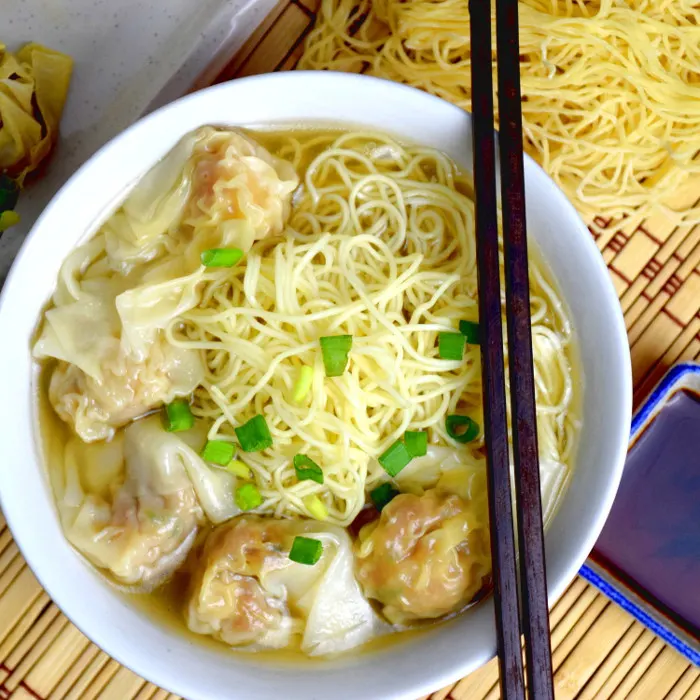
c. How to prepare the wonton soup
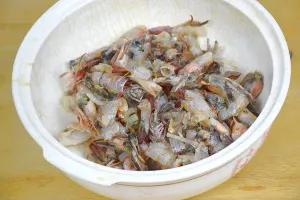
The delicious broth at the legendary Mak’s Noodles in Hong Kong includes unusual ingredients such as dried flounder and dried shrimp.
The soup uses pork bone, dried flounder, and shrimp shells. It is not by adding ingredients to the ready-made chicken broth and calling it wonton soup.
I understand getting all these exotic ingredients might be a tall order. So here is my suggestion: use chicken bone instead of pork bone and substitute the dried flounder with anchovies if unavailable.
The ideal wonton soup is flavored with bones and seafood. The seafood, especially the dried type, will give the soup broth a deep, savory flavor.
The wonton soup can also be made in advance and kept in freezer in an airtight container. Then, reheat and bring the soup to a boil; cook the wonton and noodles, and you will have a warm, hearty meal in minutes.
I have tasted many sub-quality wonton soups prepared by taking the shortcut. These are chicken stock added with soy sauce, sesame oil, and ground pepper and perhaps simmered with some shrimp shells. Gastronomes will spot the short-cut version immediately, without a doubt.
This authentic Hong Kong wonton recipe is far from the MSG-loaded, one-dimensional version. Do take some time to make it. It takes three hours, but most of the time is passive cooking.
5. Homegrown Malaysian Dry Wonton Noodles (干捞云吞面)
Growing up with Malaysian dry wonton noodles (wonton mee), I feel it is incomplete, not to mention this local variant in this article. It is pretty different from the Hong Kong wonton recipe.
This wonton is served with soup in a small bowl, while the noodles are tossed with a thick, savory sauce and garlic oil/lard on a separate plate. Barbeque pork (Char Siu) is the standard topping on the noodles, with a few stalks of blanched Choi Sum (or baby bok choy) to make it a complete meal.
This noodles dish is the ubiquitous Malaysian Chinese variant that you must try. It is a favorite noodle in every Malaysian Chinese food court and hawker center.
Here is the method of how to make it:
- Make the noodle sauce by combining 1 tbsp of dark soy sauce, 1/2 tbsp of light soy sauce, 1 tsp of sesame oil, 1/8 tsp of salt, and 1/2 tsp of sugar.
- Make the pickled green chilies.
- Slice 5 large green chilies thinly crosswise. Place them in a bowl and pour some boiling water into it. Let it sit for half a minute and drain.
- Combine 500ml of Chinese rice vinegar, 1/2 tsp of salt, and 3 tbsp of sugar.
- Pour the mixture into the drained chilies. Keep in the refrigerator until the chilies’ color turns green.
- Prepare the garlic oil.
- Heat 3 tbsp of vegetable oil over medium heat in a wok.
- Add 3 tbsp of minced garlic and saute over low heat until the garlic turns golden brown. Remove and set aside.
- To assemble. Cook 3 wontons and place the soup in a bowl. Toss the blanched noodles with the thick sauce. Place on a plate and top with garlic oil or lard. I served with Char Siu, bok choy or Choi Sum on top of the noodles.
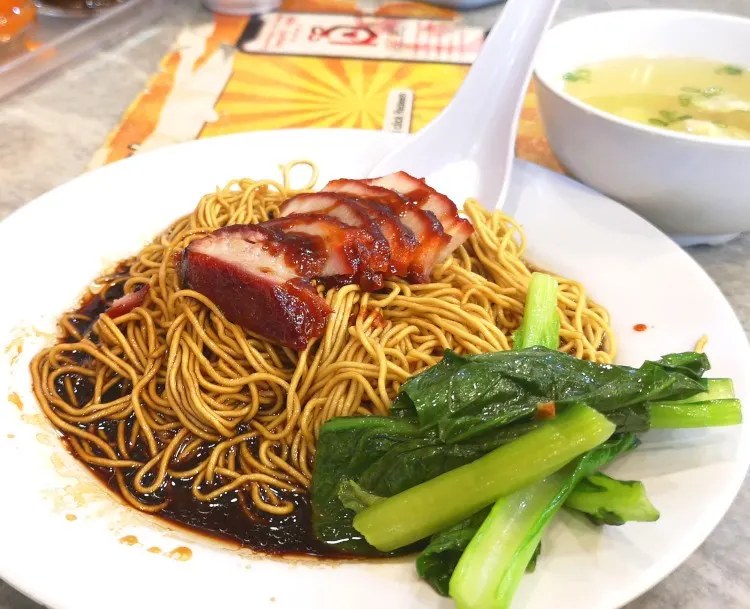
6. Techniques that significantly improve the quality of your delicious homemade wonton soup
Here are some techniques that elevate the soup’s quality to the next level. Please read before boiling the soup.
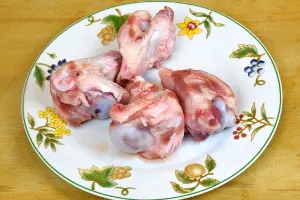
- Blanch the pork ribs before simmering helps to remove the clotted blood and impurities. However, they will leach out into the broth in the first few minutes of boiling. Therefore, blanching in a separate pot of water and scrubbing the bone before simmering is essential to producing a clean broth.
- Once the broth is boiling, reduce the heat to just enough to maintain the temperature at about 90°C. A good indication is when you see tiny bubbles forming on the liquid’s surface. (The wonton chefs have a codeword for this, ‘little shrimp eyes 蝦眼仔,’ as the bubbles resemble the eyes of the shrimps). Boiling over high heat will cause the impurity from the bone to leak into the stock and make it murky.
- If you like Hong Kong wonton soup, you can make a larger batch and keep it in the freezer. It will stay fresh for weeks. Then, divide the stock into a few portions to defrost the needed amount.
You can substitute the pork bones with the chicken bone. However, pork bones are widely used by traditional Chinese chefs. - Dried flounder is available in some Asian specialty stores. Although it is a specialty item that’s hard to get if you are not in Hong Kong or Southern China, it is one of the renowned wonton store’s best-kept secrets in Hong Kong. First, dry the fish under the sun, then fry until completely dry. Then, the fish is powdered. (Use dry anchovies as the substitutes are the next best thing).
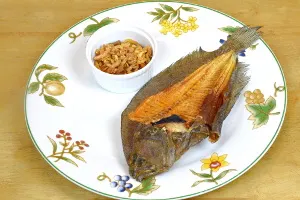
Dried flounder is available in some Asian specialty stores. Although it is a specialty item that’s hard to get if you are not in Hong Kong or Southern China, it is one of the best-kept secrets of the renowned wonton store in Hong Kong. First, dry the fish under the sun, then fry until completely dry. Then, the fish is powdered. (Use dry anchovies as the substitutes are the next best thing).
The wonton and easy wonton soup recipe
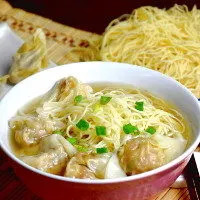
Cantonese style wonton and wonton soup
The is the classic wonton- Hong Kong style
Ingredients
For wonton
- 400 g pork, ,80% lean, 20% fat
- 400 g shrimp, ,whole piece, soak with one teaspoon of salt and 1/2 teaspoon of baking soda
- 1/2 stalk leek, , chopped, optional 韭黄, or substitute with scallion
- 1 teaspoon flounder powder
- 1 teaspoon dry shrimps, , pound into powder
- 1 teaspoon ground white pepper
- 1 tablespoon cornstarch
- 1/3 egg
- 2 teaspoons salt
- 10 g sugar
- 4 teaspoons light soy sauce
- 1 packet wonton wrapper
For wonton soup
- 750 g pork bone
- 30 g dry flounder
- 150 g shrimp shells, cleaned
- 20 g dry shrimps
- 30 g ginger, sliced
- 2 stalk scallions
- 4 teaspoons salt
- 1 teaspoon ground white pepper
- 2 liters water
Instructions
For Wonton
- Remove the shrimp shell and deveined.
- Add a teaspoon of salt and 1/2 teaspoon of baking soda to the shrimps, soak for 15 minutes.
- Clean the shrimps under running water until the water becomes clear.
- Drain off the excess water and keep it dry by leaving it on a piece of kitchen paper.
- Mince the pork coarsely.
- Combine all the ingredients until it becomes sticky. Keep it refrigerated for fifteen minutes before wrapping the wonton.
- Place the filling at the center of the wonton skin. Fold the two opposite corners of the skin together. Squeeze the wonton very lightly to let the skin adhere to the filling, leaving part of the wonton skin hanging freely.
For wonton soup
- Blanch the pork bone in boiling water for five minutes. Removed and scrub clean.
- Fill the stockpot with cold water, put all the ingredients in the water. The level of water should just enough to submerge all the ingredients.
- Bring the water to a boil over high heat.
- Once the water is boiling, reduce to bare simmer for three hours.
- Skim away the scum floating on the surface from time to time.
- Remove the bones.
- Strain through a wire mesh strainer to get a clear soup.
- Season with light soy sauce, salt, and ground white pepper.
Recommended Products
As an Amazon Associate and member of other affiliate programs, I earn from qualifying purchases.
Nutrition Information:
Yield: 4 Serving Size: 4 bowls 5 wontons eachAmount Per Serving: Calories: 946Total Fat: 43gSaturated Fat: 15gTrans Fat: 0gUnsaturated Fat: 23gCholesterol: 576mgSodium: 5815mgCarbohydrates: 18gFiber: 1gSugar: 3gProtein: 113g
This data was provided and calculated by Nutritionix on 3/26/2019
7. The wonton wrappers and the noodles
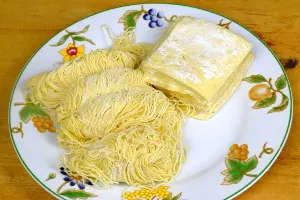
Making wonton wrappers and noodles is tedious. Even some wonton shops do not make the noodles and wrappers. You may buy the ready-made one from local grocery stores or Asian markets, usually in the refrigerated section. Wonton wrappers are different from dumpling wrappers. They are square and thinner. Be sure you use the square wonton wrappers for this recipe.
The noodle is made with duck eggs, pressed, and kneaded with a unique method with bamboo. This process can produce noodle that has a springy character, which is called bamboo noodles 竹升面. Fresh wonton noodles are the best, but the dried type is available widely.
Wonton noodles are springy after cooking. People usually judge the quality of the noodles by related to how springy it is. Not all Asian noodles are suitable for wonton noodles. Choose the dry egg noodles or the fresh one if available, or ask the noodles vendor which type is the most appropriate.
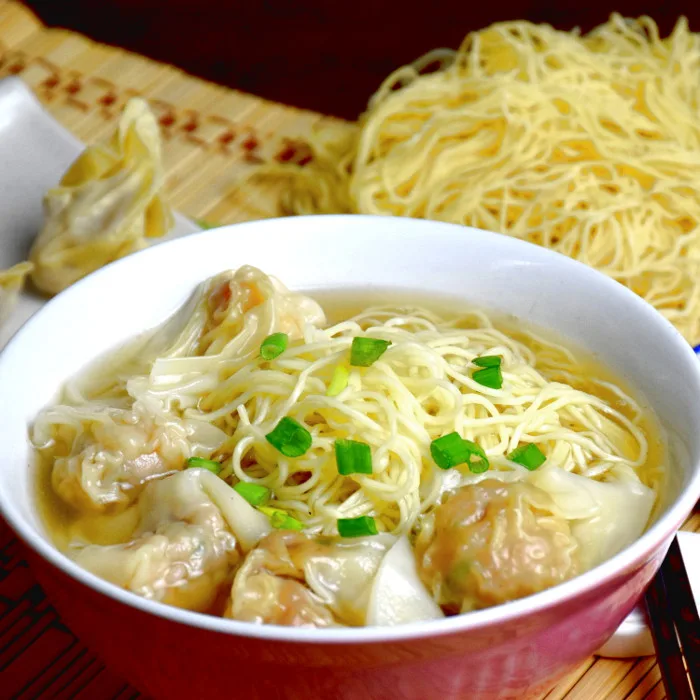
8. How to assemble a bowl of wonton noodles
Here is the accepted method by all the famous wonton noodle shops in Hong Kong.
1. add a few drops of sesame oil and a teaspoon of soy sauce to a bowl.
2. Place the cooked wontons in the serving bowl.
3. Loosen the raw noodles and put them in a large pot of boiling water for about one minute. By then, the noodles should have been three-quarters cooked.
4. Remove the noodles with a wire mesh strainer from the boiling water. Transfer the noodles immediately into a pot of cold water and soak for a few seconds.
5. Remove the noodles from the cold water and place them back in the boiling water for another ten seconds.
6. Add the wonton soup into the bowl filled with the wontons.
7. Place the noodles on top of the wontons. Part of the noodles should be above the surface of the soup.
8. Sprinkle with chopped spring onions.
You may ask: Isn’t revealing all the gorgeous-looking wontons by putting them on top of the noodles is more appealing?
Here is the reason:
This arrangement of wontons, soup, and noodles is called ‘laying the bowl with wontons 打碗底. The wonton should be placed at the bottom of the bowl and submerged in the steaming hot wonton soup to keep them warm. The noodle is added on top and should only be partially submerged to avoid the noodles from turning soggy.
What about using cold water to soak the noodles?
This method is called 过冷河 in Chinese, the codeword among the chefs loosely translated as ‘passing through the cold river.’ Dipping the noodles in cold water can prevent them from overcooking and maintain the springiness of the texture.

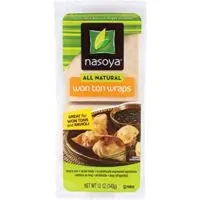
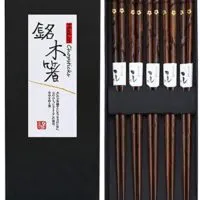
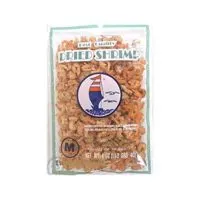
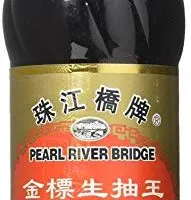
Fried wonton recipe with pork and shrimp filling
Wednesday 17th of December 2025
[…] Wonton soap is one of the most popular Chinese noodles available. Since part of my family lives in Hong Kong, I have savored the best wonton noodles available. Here is the original recipe for preparing the authentic Hong Kong wonton noodles. […]
Beef Rendang Recipe (How to make authentic Indonesian Rendang)
Friday 13th of December 2024
[…] Wonton soup and noodles. We have our version of wonton noodles, which differs from the wonton soup noodles in Hong Kong. This article provides both recipes. […]
Food lover
Friday 23rd of August 2024
This wonton noodle recipe, which is easier to make and uses vegetables as the main ingredient, is suitable for vegetarians or those who are looking for a healthy diet Many thanks to the blogger for sharing this recipe! I found another wonton noodle recipe today that looks good and looks very authentic. The ingredients and the preparation are very much in line with the traditional practice. May I ask if this is a good recipe? https://www.cookcoda.com/wonton-mee/
KP Kwan
Saturday 24th of August 2024
It should be good, although it is a different way from the traditional Hong Kong style.
CP
Monday 25th of September 2023
The best wonton noodles at SF Bay Area restaurants have a distinctive savory taste. I’ve made fresh, used dried egg b]noodles from HK but never figured out the secret. Do you know? Also, flounder powder is available at markets in SF Chinatown, oddly not out in the Richmond shops.
CW
Friday 25th of November 2022
Hi. Thank you for sharing your recipe. I don't normally cook shrimp. Would you please share how to clean shrimp shells? I look forward to making the Wonton Noodle Soup :)
KP Kwan
Saturday 26th of November 2022
I do not have any special skills to share. However, I usually wash the heads and the shells with plenty of water, then use them to boil the soup. If I intend to use them to make Penang shrimp noodles, I will drain them dry first. After that, use some oil for stir-frying them until fragrant. I then crushed them before adding them to water to boil. After boiling, remove the crushed shells and the heads with a wire mesh strainer.